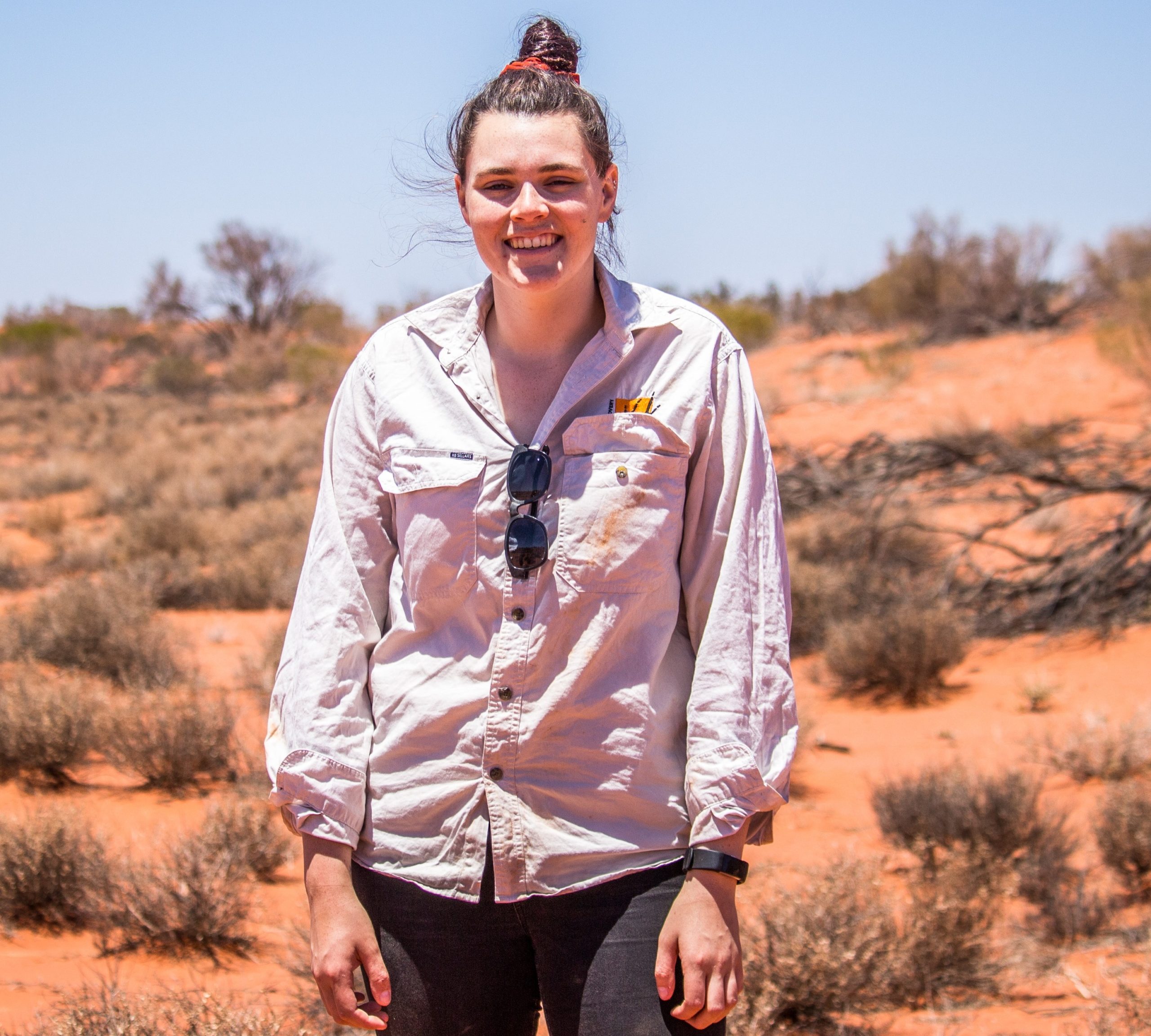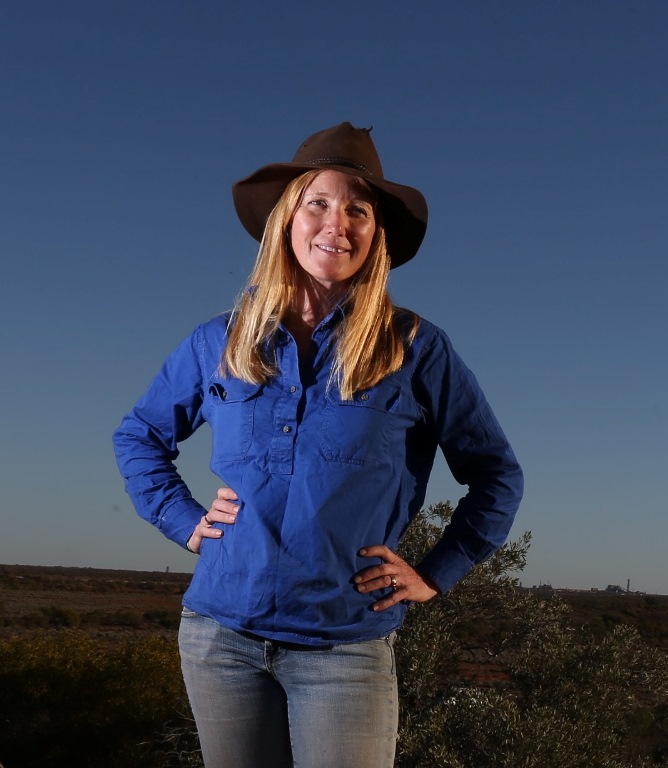By Emily Gregg and Maddy Wilcox-Kerr
Interns
Celebrating the architecture of stick-nest rats
All the animals in our arid environment must find some kind of shelter to protect them from the heat of summer days, and the cool of winter nights. Most animals retreat into burrows, including small mammals such as the Spinifex Hopping Mouse, and larger ones such as the Burrowing Bettong. It’s not just our nocturnal mammals either; our reptile species also retreat to burrows during the night.
Burrows are sprawled everywhere throughout this landscape, to the point where you’re hard pressed to walk around at night here without tripping over one. These dark, sandy sanctuaries clearly provide outstanding protection from the arid elements.
Yet the Greater Stick-Nest Rat, aka Stickies, builds itself an entirely different kind of living room. Taking his or her time, a Stickie will, as their name suggests, collect a bunch of sticks and construct a nest. This isn’t a simple collection of sticks; the rats actually stick these sticks together, and with no super glue in their back sheds, they are somewhat limited in their sticky substance of choice.
Like many desert animals, Stickies don’t get a lot of water; they survive mostly off the moisture within their food. As a result, their urine is thick and sticky, almost like honey, and honey seems like a perfect substitute for glue, doesn’t it? So, yes, the rats use their urine to stick their little sticky houses together, displaying an industriousness we can surely all admire.
Since we are lucky enough to accommodate these cool critters, our team has noticed a few different styles of Stickie nests around the reserve, and we thought we should share them with you!
The Granny Flat
With the kids growing up and new family members moving in, these Stickies needed to upsize their home. Adding a granny flat to the main bungalow allows the family to prepare for the future. At Arid Recovery, it is not uncommon for Stickies to build homes up to 2m wide with intricate tunnel systems connecting sites to outside areas. In the future, these two nests may become one.

The Squatter
Forget Ned Kelly or ‘Mad Dog Morgan’, the Aussie outback has a new wave of thieving bandits. Underneath our research station we have a squatter decorating his house with stolen goods. Upon closer inspection of this nest we’ve come across pens, forks and flagging tape that look suspiciously familiar. Sometimes, Stickies will incorporate unnatural materials they find to add structure and strength to their home. Although these materials are rightfully ours, we are putting them on loan until further notice.

The Rocky Outcrop
“Little Stickie, little Stickie, let me come in.”
“No, no, not by the hair on my chinny chin chin.”
“Then I’ll huff, and I’ll puff, and I’ll blow your house down!”
But the third little Stickie had built his house from Bricks and the Big Bad Dingo could not get in.
Stick-nest Rats are very resourceful, and will use whatever ready materials they can find. This inventive rat took the opportunity to build a fortress within a boulder pile by filling all the gaps between the rocks.

The Outhouse
Quintessentially Australian Stickies may choose to construct their home in the iconic outback dunny. The Outhouse will provide the Stickie with water and protect them from predators, sounds very tempting doesn’t it? Despite the smell, we have one keen Stickie who has begun their nest construction between the walls of Arid Recovery’s drop toilet. In our opinion, this Stickie has poor taste and will need to be relocated to a more suitable environment.

The Multicultural Suburb
Multiculturalism is a reality of Australian life and living in an ethnically diverse suburb keeps things interesting. Living harmoniously alongside Bettongs and Bilbies, Stickies are well and truly contributing to a diverse Australia. Some Stickies are redefining what it means to be part of a multicultural Australia and are seeking refuge inside the bettongs’ deep cool burrows to escape the extreme heat of the summer. This behaviour is not uncommon, during the hottest hours of the day most mammals like to retreat below ground.

The Modern Family
Taking the Multicultural Suburb to the next level, “The Modern Family” is a cooperative project between Stickies and Bettongs to create the ultimate warren. In most cases you’ll find these sorts of structures occupied by both Stickie and Bettong families. Because they have different foraging and sleeping habits these sorts of arrangements work quite well.

The Brutalist
Simple, powerful, intimidating. We have one architect out at our reserve willing to experiment with late 20th century styles. This is “The Brutalist”, constructed in a pile of star pickets at our fencing stockpile. The ruggedness of this work is characteristic of its genre placing us in the hall of fame alongside The Australian National Gallery and UTS Tower in Sydney.

The Mobile Home
For all those Stickies with wanderlust there is no need to buy a permanent home when you can be out there travelling the world. This construction may not be the most durable option, but for Stickies who are regularly on the move, a mobile home can be quite appealing.

The Ghost Town
These are the remains of a nest that was active 100 years ago in a breakaway overhang in outback South Australia. The nest would have been used by many generations of Stick-nest Rats over the years but is now silent and empty.
These spooky nests can be found right across the arid and semi-arid zones and are a poignant reminder of what we’ve lost.

The Conclusion
Stick-nest rats are amazing. If you want to learn more, click here.
Please consider adopting a stick-nest rat or donating to Arid Recovery, so we can continue protecting these amazing little creatures.





















